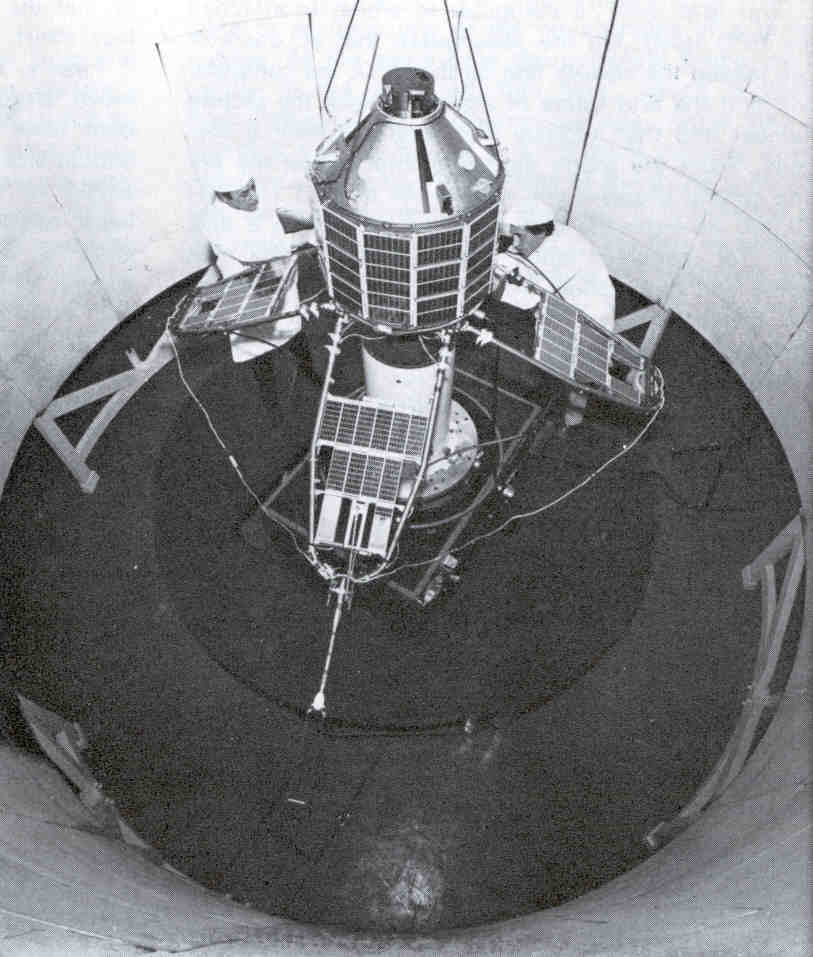

Following Ariels I to III launched from 1962 onwards, Ariel IV (UK4) is planned to be the next in this series of UK/USA collaborative satellites. The payload comprises experiments from the Universities of Birmingham, Sheffield, Manchester and Iowa (USA). Collectively, the experiments will measure the intensity of electromagnetic radiation (noise) over a wide band of radio frequencies, and of energetic electrons and protons which may give rise to the radiations. The properties of the ionospheric plasma which need to be studied for the understanding of the particle and radiation interactions will also be measured.
The Station provides the project scientist who coordinates the whole payload. Other ways in which RSRS is participating in the project are indicated in the following paragraphs.
The Station is a partner in the Manchester experiment. In close association with the University, RSRS is responsible for specifying the satellite equipment, supervising its construction by the industry, its testing and incorporation in the satellite. The equipment is designed to investigate the intensity and frequency characteristics of the radio-noise field at the satellite. For this purpose a receiver connected to an extendable dipole aerial is used. The receiver is designed so that its tuning either sweeps linearly over the range 0.25 to 4 MHz or is fixed at a frequency of 2MHz. Three functional modes, selectable on command from the ground, are available: namely alternate swept- and fixed-frequency operation for periods of 16 sec each, continuous fixed-frequency operation and continuous swept-frequency operation (ie repeated frequency sweeps each occupying 16 sec). Interpretation of the final results will be undertaken by Manchester and RSRS on a co-operative basis.
Another RSRS contribution to the UK-4 payload is in connection with the Sheffield VLF experiment; the Station will build and test a counter to measure the rate of occurrence of noise-impulses in the 3.2 and 9.6 kHz receiving channels of that experiment.
As in the case of previous Ariel satellites, raw data from UK-4 will be received and recorded on magnetic tape at the stations of NASA's world-wide Space Tracking and Data Acquisition Network; this network includes the station at Winkfield which, since 1960 has functioned as a joint venture between RSRS and NASA.
Following the practice adopted at RSRS for Ariels II and III the analogue tapes containing the raw data will be recovered and the information converted into digital form suitable for input to the Station's ICL 1940A computer. The data will then be scanned and any faults found will be corrected. This will be achieved by means of several computer programs written by staff of the Computer Group. The final stage of the processing before the data are handed over to the experimenters will be carried out on the Atlas Laboratory's 1906A computer. The development of this stage of the processing is being carried jointly at RSRS and Atlas Laboratory. The programs convert the raw data into meaningful scientific quantities and check that each experiment is functioning correctly besides adding information about the spacecraft's position and attitude.

Picture above shows UK4 undergoing pre-flight tests by the British Aircraft Corporation's Space Systems group. BAC are prime contractors and co-ordinating design authority for UK4 and its ground check out equipment. under a contract with the Ministry of Aviation Supply sponsored by SRC.
For radio noise trials UK4 was taken underground, to an air-conditioned cavern in the old stone workings near Bradford-on-Avon. There, many feet of sandstone rock effectively screened UK4 from all but the most persistent radio waves present in the atmosphere so that internally generated noise from the spacecraft could be measured and, if necessary, eliminated. Tests carried out in the early hours of the morning, when most radio stations are closed, showed that UK4 met the specification by generating no more than an extremely low level of noise.